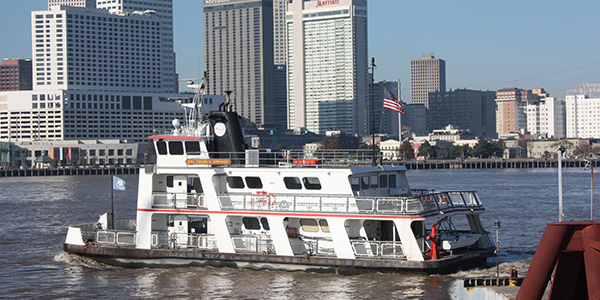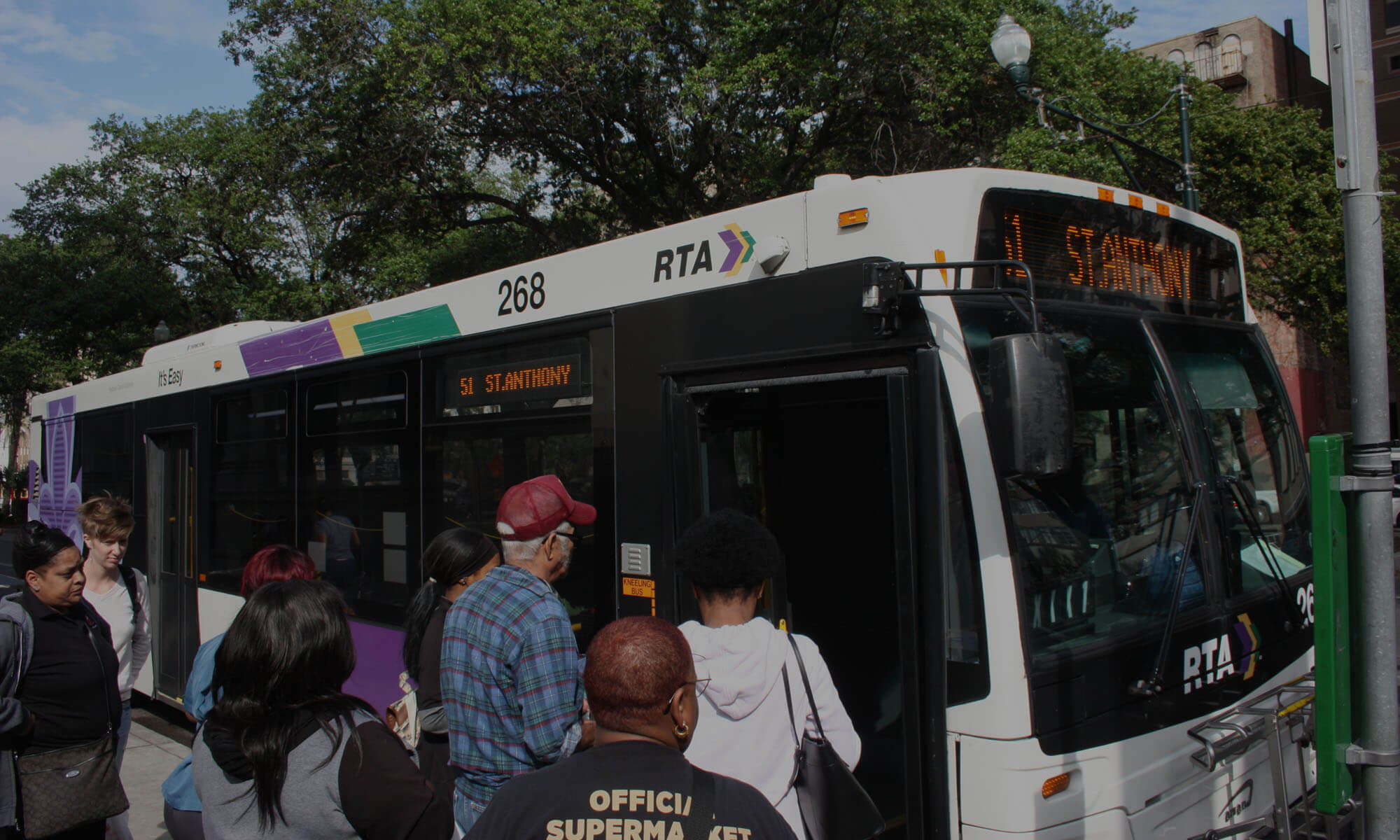
It’s been a frustrating fall for New Orleans residents who rely on the Algiers Point/Canal Street ferry.
As of today, the ferry has been out of service for almost 60 consecutive days, replaced by an unreliable “bus bridge.” that has to fight traffic both ways on the Crescent City Connection. And that’s on top of months of on-again/off-again service earlier this year.
This ongoing frustration for riders is the result of a number of years of poor management and bad strategic decisions. Both existing boats that serve the line are considered unable to carry passengers without significant repair. Meanwhile, both new ferry boats that were expected as early as Spring 2018 are still unable to pass Coast Guard inspections and begin serving riders.
RIDE is as frustrated as anyone over this situation. It’s been especially disappointing as it comes in tandem with the chaotic move of the downtown transfer center to Duncan Plaza after the collapse of the Hard Rock Hotel building. Service problems associated with that move have caused significant hardship for transit riders who went weeks without being able to rely on the schedule for a number of RTA lines. As one of our supporters put it the other week, “this has been the worst month to be a New Orleans transit rider in a long time.”
But frustrated as we are, we’re more interested in seeing restored service and then forward progress instead of unnecessarily playing the blame game. With that in mind, we wanted to update RIDE members on where the situation is at currently and what to expect between now and the end of the year.
Currently, there are three potential resolutions that would get ferry riders back to a normal schedule:
- Successful repair at least one of the existing ferries
- Start of active service of the new ferry boats
- Short-term charter of an outside operator’s boat
Our understanding of the status of each of these (as of November 25) is as follows:
- Successful repair of the existing ferries: The last several years of inconsistent maintenance have taken their toll as both of the existing boats – the Armiger and the Thomas Jefferson – have been in and out of service all year. The Thomas Jefferson has been out of service for most of the year and is not expected back anytime soon. However the Armiger is closer to being returned to service, according to the RTA. The Armiger’s issue is a leak in seals between the propellers and the interior of the boat that has proved tricky for the RTA to fix, but is not as significant as the repairs needed for the Thomas Jefferson. The RTA says that a recent suggestion from state officials may prove fruitful in the next week or two. But there have been other false hopes in recent weeks with the Armiger, so it is unclear how seriously riders should take this chance.
- Start of active service with the new ferry boats: The RTA says that a recent inspection by an outside firm indicates that there are no fatal flaws to the new boat, just a series of cosmetic and minor structural issues that need to be fixed. The RTA says those can be easily corrected by the manufacturer and are preparing to return the boats to the manufacturer to make those fixes. Once those repairs are made, the RTA says, the US Coast Guard will inspect the boats and – if the boats pass – they would be able to begin revenue service immediately. The RTA says all of these steps could take about six to seven weeks total, meaning the boats could nominally start servicing the Algiers Point/Canal line by early- to mid-January. However, some outside observers are skeptical that the fixes will be that easy or take that little time.
- Charter ferry service from an outside operator: The RTA has explored contracting charter ferry service for the short-term, in case it proves impossible to fix the existing boats or bring the new boats online in the next few months. The RTA’s initial research indicated two potential hurdles with chartering:
- Chartering service could cost almost $200,000 a month and would require at a minimum a six-month commitment, meaning the RTA could be spending almost $1.2 million additional for the service, potentially taking resources away from other areas.
- No nearby firms matched with the RTA’s needs, meaning any charter service would have to send a boat from as far away as New York, which would add additional time before any service would be able to start.
With these constraints in mind, the RTA is hoping that either the existing or new boats will be ready by the end of the year, rather than commit that much additional money to the situation.
RIDE’s assessment
As frustrating as all of this is, RIDE is inclined to give the RTA the benefit of the doubt – for now. Years of mismanagement led us to this situation and mean that there is no easy way out. We shouldn’t excuse the situation, but the new management team at the RTA inherited a bad situation when they took over on September 1 and they deserve a limited amount of patience as they try to fix the situation.
But that patience should only hold up until early January – at that point at least one of the above options needs to be in effect.
In the meantime, the RTA also needs to focus on the following:
Increase service on the bus bridge: The current bus bridge frequency of every 30 minutes matches up with the scheduled ferry departure time, but the travel time does not. Instead travel times are significantly longer. Increased frequency is the least that the RTA can do for riders to make up for that inconvenience.
Be transparent: The RTA needs to continue being clear and transparent about the status of each of the above options so the public knows what to expect moving forward.
Develop clear long-term plans for success: The RTA needs to have a clear plan in place to make sure this situation never happens again. Bringing on a new contractor to operate the ferries is a good start, but the RTA also needs to clearly communicate new processes and procedures with the public so the public can begin to regain trust that the ferries will be a long-term and reliable option moving forward.

